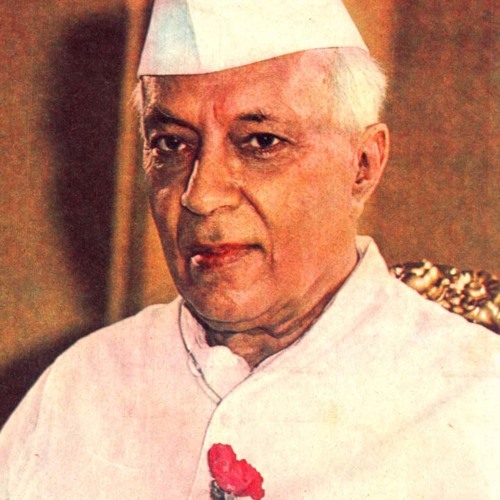Text

Jawaharlal Nehru, often referred to as Pandit Nehru, was a visionary leader and the first Prime Minister of India. Born on November 14, 1889, in Allahabad, Nehru played a pivotal role in shaping the destiny of independent India. His leadership and commitment to democratic principles left an indelible mark on the nation.
Nehru's tenure as Prime Minister from 1947 to 1964 marked a critical phase in India's history. He championed the cause of social justice, secularism, and the rights of marginalized communities. His famous speeches and writings, such as "Tryst with Destiny," continue to inspire generations of Indians. Nehru's commitment to education led to the establishment of numerous institutions, including the Indian Institutes of Technology (IITs) and the All India Institute of Medical Sciences (AIIMS), laying the foundation for scientific and technological progress.
0 notes
Text
The Art of Tea: A Journey through Culture, Health, and Flavor
Tea, the second most consumed beverage in the world after water, has a rich and diverse history dating back thousands of years. Beyond being a comforting drink, tea embodies culture, health benefits, and a world of flavors. In this article, we'll take a journey through the world of tea, exploring its origins, its impact on culture, its many health benefits, and the myriad of flavors it offers.
The Origins of Tea
The story of tea begins in ancient China, where legend has it that Emperor Shen Nong discovered tea around 2737 BCE when tea leaves blew into a pot of boiling water he was preparing. Over time, tea became deeply ingrained in Chinese culture, influencing everything from art and philosophy to medicine and daily rituals.
Tea eventually made its way to Japan, where it took on its own unique traditions, most notably in the form of the Japanese tea ceremony, or Chanoyu. This ritualistic practice celebrates the preparation and consumption of matcha, a powdered green tea that emphasizes mindfulness, aesthetics, and respect.
The British also played a significant role in tea's global spread. During the 17th century, the British East India Company began importing tea from China, making it popular in England and eventually leading to the Boston Tea Party in 1773, a pivotal event in the lead-up to the American Revolution.
Tea and Culture
Tea has had a profound influence on the cultures it has touched. In China, tea has long been associated with Confucianism and Daoism, and it has played a central role in various social rituals and ceremonies. In Japan, the tea ceremony is not just a cultural practice but a spiritual one, emphasizing harmony, respect, purity, and tranquility.
In British culture, the tradition of afternoon tea became popular in the 19th century, and it remains a cherished custom today, complete with finger sandwiches, scones, and a pot of Earl Grey or English breakfast tea.
Tea and Health
Beyond its cultural significance, tea offers a wide range of health benefits. The leaves of the Camellia sinensis plant, which produces black, green, white, and oolong teas, contain polyphenols, antioxidants, and other compounds that have been linked to various health advantages.
Antioxidants: Tea is rich in antioxidants, such as catechins in green tea and theaflavins in black tea. These compounds help combat free radicals in the body, potentially reducing the risk of chronic diseases like heart disease and cancer.
Mental Alertness: Tea contains caffeine, which, though less than coffee, can provide a gentle and sustainable energy boost without the jittery side effects.
Weight Management: Green tea, in particular, is believed to aid in weight management by boosting metabolism and promoting fat oxidation.
Digestive Health: Herbal teas like peppermint and ginger can soothe digestive discomfort, helping with issues like indigestion and bloating.
Stress Reduction: The ritual of making and sipping tea can have a calming effect, reducing stress and promoting relaxation.
Flavors of the World
Tea's diversity goes beyond its cultural significance and health benefits. Different types of tea are created through varying processes, resulting in a wide array of flavors.
Green Tea: Known for its grassy and earthy flavors, green tea is minimally processed, preserving its natural color and fresh taste. Varieties like Sencha, Matcha, and Dragonwell offer distinct profiles.
Black Tea: Black tea, with its robust and bold flavors, undergoes full oxidation. Varieties like Assam, Darjeeling, and Earl Grey showcase the diversity within this category.
White Tea: White tea is the least processed, resulting in a delicate, floral, and slightly sweet taste. Silver Needle and White Peony are well-known white tea varieties.
Oolong Tea: Falling between green and black tea in terms of oxidation, oolong teas are complex and nuanced. They can range from light and floral to dark and rich, with Tie Guan Yin and Da Hong Pao being notable examples.
Herbal and Fruit Infusions: Beyond the traditional tea types, there's a world of herbal and fruit infusions, including chamomile, peppermint, hibiscus, and more, each offering unique and delightful flavors.
Conclusion
Tea is more than just a beverage; it's a cultural treasure, a source of well-being, and a voyage of flavors waiting to be explored. From the serene Japanese tea ceremonies to the bustling British afternoon teas and the myriad health benefits, tea continues to captivate hearts and minds around the world. So, whether you're seeking a moment of tranquility, a boost of energy, or simply a delightful taste experience, a cup of tea is always ready to take you on a journey of culture, health, and flavor.
2 notes
·
View notes